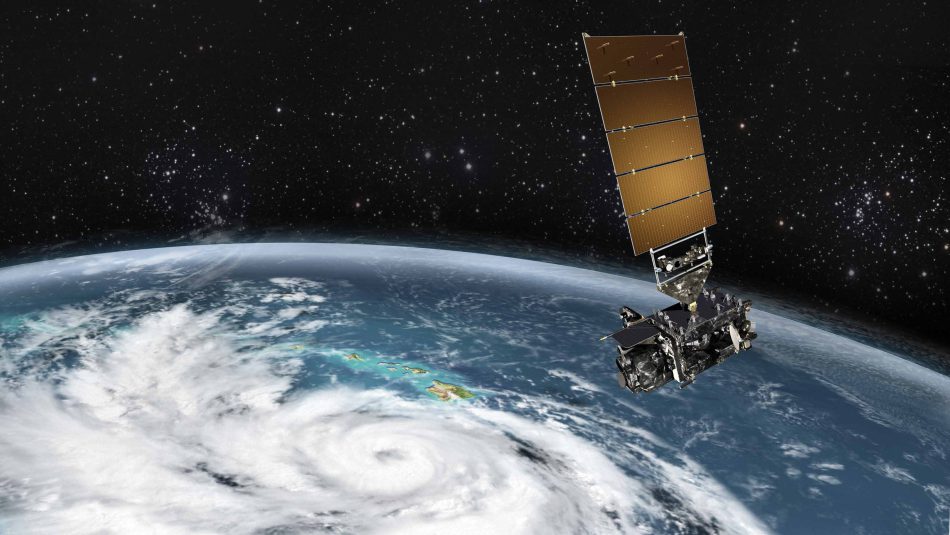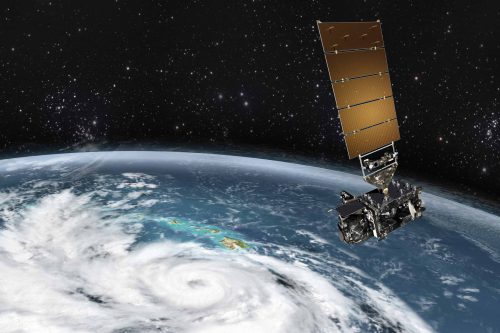
Back to selection
GEO Satellite
GOES-T (GOES-18) GEO
succesfull
Launch date
3 March 2022
Dedicated Mission
Country

Purpose
Weather Forecasting
Position
136.9° West
Manufacturer
Operator
National Oceanic and Atmospheric Administration (NOAA)
Launch operator
Launch vehicle
Atlas V
Expected lifetime
15+ Years

GOES-18 (Formerly GOES-T): NOAA’s Next-Generation Weather Satellite Enhancing Forecast Accuracy
Overview
GOES-18, initially designated GOES-T, is the third satellite in NOAA’s GOES-R Series, the current generation of advanced Geostationary Operational Environmental Satellites (GOES). Built by Lockheed Martin on the A2100A satellite bus in Littleton, Colorado, GOES-18 supports improved environmental monitoring, severe weather forecasting, and disaster response for the United States and the Western Hemisphere.
GOES-18 was launched on March 1, 2022, from Cape Canaveral Space Force Station (CCSFS), Florida, aboard a ULA Atlas V rocket, and became operational as GOES-West on January 4, 2023. It is expected to remain in service until at least 2037, extending NOAA’s geostationary satellite capabilities well into the future.
Key Capabilities and Benefits
GOES-18 significantly enhances environmental and meteorological observations with the following applications:
-
Improved detection of heavy rainfall and flash flood threats
-
Enhanced wildfire detection and intensity estimation
-
Advanced smoke and dust monitoring
-
Early warning for lightning ground strikes
-
Better air quality alerts
-
Improved fog and low cloud detection
-
Safer aviation route planning and transportation forecasting
-
Accurate hurricane track and intensity forecasts
-
Warnings for communication disruptions, power outages, and navigation interference
-
Extended tornado and thunderstorm warning lead times
-
Monitoring of space weather and radiation hazards
GOES-18 also supports Search and Rescue (SAR) operations through the GEOSAR system—detecting emergency beacon signals with lower uplink power requirements, enabling broader coverage for life-saving missions.
Launch and Deployment Timeline
-
Launch Date: March 1, 2022
-
Launch Vehicle: Atlas V
-
Launch Site: Cape Canaveral SFS
-
Orbit Location: Initially 89.5°W (checkout), then moved to 137.2°W as GOES-West
-
Design Life: 15 years (10 years operational after 5-year replacement phase)
After launch, GOES-T was renamed GOES-18 on March 14, 2022, upon reaching geostationary orbit. Post-launch testing was split between 89.5°W and 136.8°W. It supported critical hurricane season operations during GOES-17’s infrared sensor issues.
Redesign and Instrument Fixes
A key improvement in GOES-18 was the redesign of the loop heat pipe (LHP) on the Advanced Baseline Imager (ABI). This fix was necessary after GOES-17 experienced a severe cooling system failure. Lockheed Martin, along with Harris Corporation, removed and rebuilt the ABI on GOES-T prior to launch to prevent recurring issues.
Operational Transition and Interleaving
From August 1 to September 6 and October 15 to November 11, 2022, GOES-18 ABI data was interleaved with GOES-17 data to address performance drops during warm periods. NOAA executed a seamless transition plan, ensuring:
-
No need for antenna repointing
-
Continuity of X-band downlink services
-
Telemetry and data sharing via Cloud interfaces
GOES-17 has since been moved to 105°W as a backup satellite.
Tribute
The GOES-T launch was dedicated to Mark Timm, a respected ULA team member. The rocket fairing bore the inscription:
“In memory of our colleague and friend – Mark Timm – The ULA Team.”
GEO Satellite
GOES-T (GOES-18)
succesfull
GEO Satellite
GOES-T (GOES-18)
succesfull
